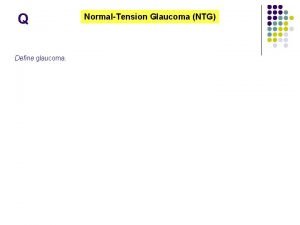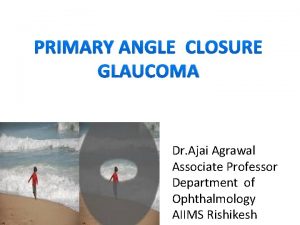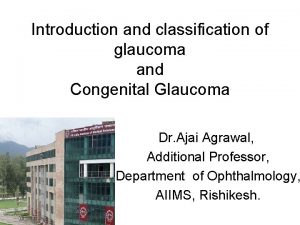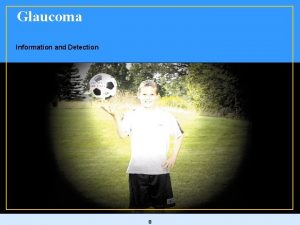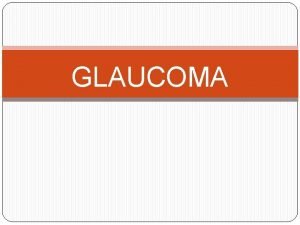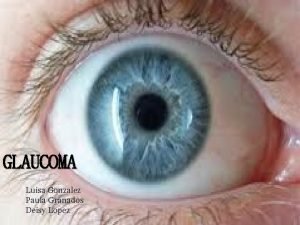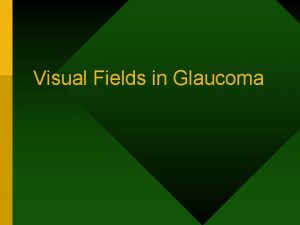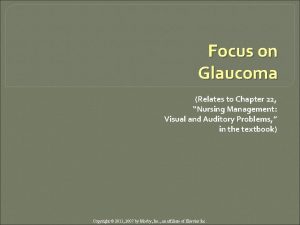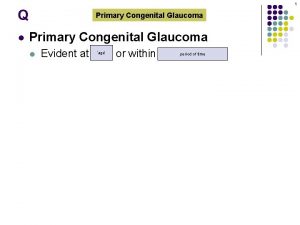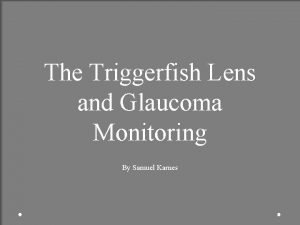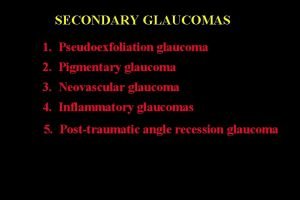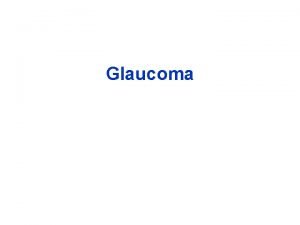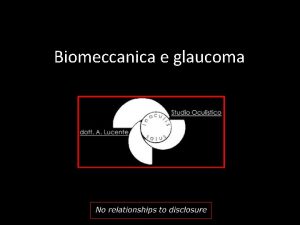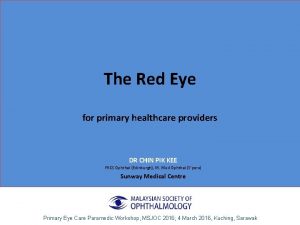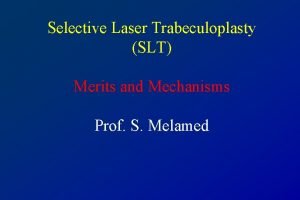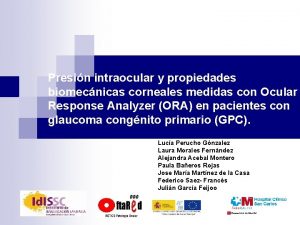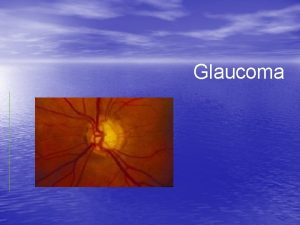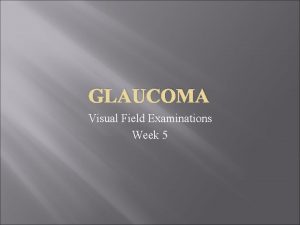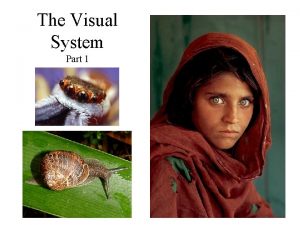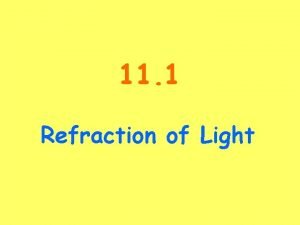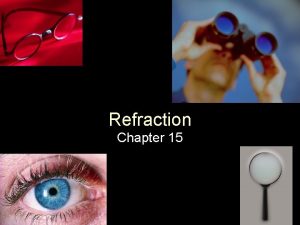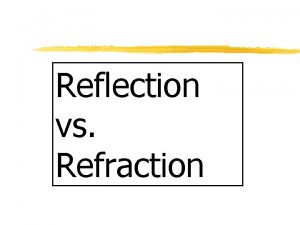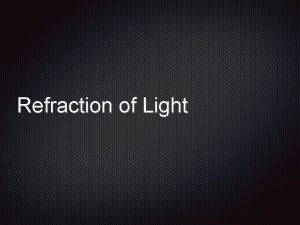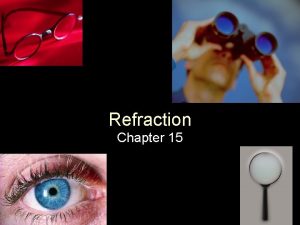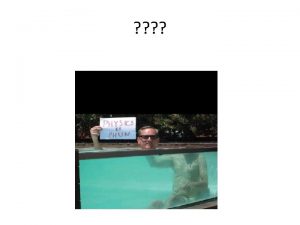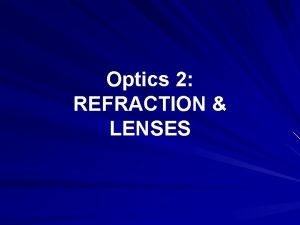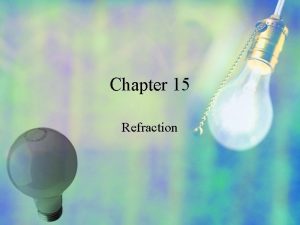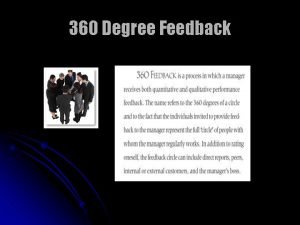Refraction Glaucoma Glaucoma test Degree of cell packing



































- Slides: 35


Refraction Glaucoma & Glaucoma test


Degree of cell packing in retina

Intrinsic Muscles of the Eye: The Iris • Iris – circular. . . constricts – radial. . . …dilates • Dilating pupil for eye exam: how to do it? Pharmacology of pupillary dilation: Atropine

Intrinsic Muscles of the Eye: Ciliary Muscle • Ciliary muscle relaxed = tension on zonular fibers = tension on lens = flattened lens = distant focus • Ciliary muscle contracted = tension on zonular fibers reduced = less tension on lens = lens becomes more spherical =near focus • Eye strain Using a Microscope or Binoculars

Accommodation animation 1) Demonstrate Convergence 2) Measure NPA With Convergence

NPA Left eye ________mm NPA Right eye _______ mm Sex of subject ___ Age in months___ with corrective lenses/contacts? yes/no

Presbyopia

Disorders of Focus • Myopia = nearsighted – eyeball too long, cornea/lens to “strong” – image focused in front of retina – correct with concave lens • Hyperopia = farsighted – eyeball too short, cornea/lens to “weak” – image focused behind retina – correct with convex lens • Astigmatism – irregular surface of lens or cornea

Cataract •

Extraocular muscles • Actions of extraocular muscles • Motor innervation by CN III, IV, VI Strabismus= misalignment of eyes Storytime


Suprachiasmatic Nucleus for diurnal cycling Visual reflexes: Aka. Area 17 and V 1 Accomodation, Saccades, Tracking, Pupillary reflex

Evolution of Binocular Vision Mapping the boundary of each visual field

Retinotopy

Goliath?

The Retina • Photoreceptors – Rods – Cones • Bipolar cells • Ganglion Cells – axons converge at optic disk – axons constitute optic nerve • Horizontal cells • Amacrine cells

Importance of abundant membrane

Visual Acuity • 120, 000 rods and 6, 000 cones per retina • 1, 200, 000 retinal ganglion cells & axons • 105: 1 convergence ratio • Fovea: cones only, 1: 1 highest visual acuity but poor sensitivity Counting fingers and Reading the Writing on the Wall


Demonstration of Blind Spot (diagram)

• Differences due to opsin: 4 types

Trichromatic Theory of Color Vision Web-based color deficiency test

Stargazing Finding your car in a dark parking lot Choosing socks

“Bleaching” of photopigments Visual Purple

The Dark Current


Phototransduction • In the DARK, rod is depolarized due to influx of Na+ (called dark current) • In the LIGHT, rod is hyperpolarized • c. GMP keeps Na+/Ca++ channels open • Light results in decrease of c. GMP and thus closure of ion channels, and • Hyperpolarization of cell, and • Reduced release of Neurotransmitter Glutamate



Properties of Cortical Neurons • Simple – respond to stationary bar of light in certain orientation • Complex – respond to moving bar of light in certain orientation • Hypercomplex – respond to moving bar of light of a certain length in a certain orientation


Parallel Processing in the Cortex • Motion sensitive • Color and shape sensitive Story of woman at street crossing

Why so much emphasis on the Visual System?
 Intermediate uveitis
Intermediate uveitis Triggerfish glaucoma
Triggerfish glaucoma Scheie stripe
Scheie stripe Site:slidetodoc.com
Site:slidetodoc.com Schwalbe line
Schwalbe line Trabeculodysgenesis meaning
Trabeculodysgenesis meaning Homeoptico
Homeoptico Open angle glaucoma risk factors
Open angle glaucoma risk factors Open angle glaucoma symptoms
Open angle glaucoma symptoms Bayoneting vessels glaucoma
Bayoneting vessels glaucoma Indentation gonioscopy
Indentation gonioscopy Is aloe vera good for glaucoma
Is aloe vera good for glaucoma Notch glaucoma
Notch glaucoma Anillo neurorretiniano
Anillo neurorretiniano Primary angle closure glaucoma
Primary angle closure glaucoma Implante xen
Implante xen Hill of vision perimetry
Hill of vision perimetry Capsular glaucoma with pseudoexfoliation of lens
Capsular glaucoma with pseudoexfoliation of lens Nursing diagnosis cataract nursing care plan
Nursing diagnosis cataract nursing care plan Nursing assessment of glaucoma
Nursing assessment of glaucoma Glaucoma
Glaucoma Triggerfish glaucoma
Triggerfish glaucoma Pseudoexfoliation glaucoma gonioscopy
Pseudoexfoliation glaucoma gonioscopy Fornix based conjunctival flap
Fornix based conjunctival flap Glaucoma anatomy
Glaucoma anatomy Glaucoma congenito triada
Glaucoma congenito triada Ciclodiodo
Ciclodiodo Optic disc cube 200x200
Optic disc cube 200x200 Glaucoma phacomorphic
Glaucoma phacomorphic Pex glaucoma
Pex glaucoma Chin pik kee
Chin pik kee Rationale for slt
Rationale for slt Glaucoma congenito
Glaucoma congenito Congenital glaucoma
Congenital glaucoma Biometria ocular sod
Biometria ocular sod Springbank glaucoma
Springbank glaucoma


